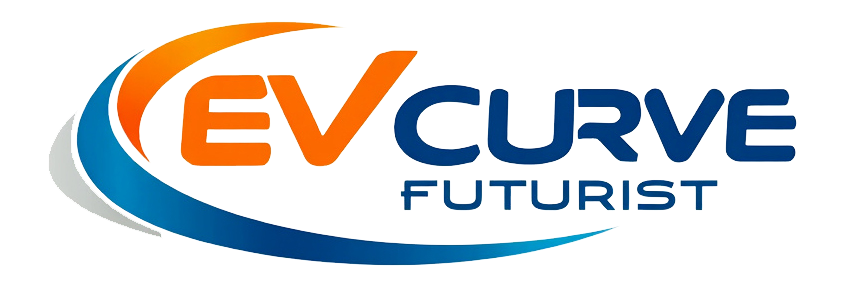Note: I’m not anti-Tesla. I enjoy driving our Tesla Model Y—it’s reliable, efficient, and a joy to own. This analysis critiques strategy, not the product.
Tesla is set to launch its first robotaxi service in Austin, Texas, on June 22, 2025, a milestone moment for Elon Musk’s long-promised autonomous vision. This analysis also builds on ideas from a recent companion blog, The Vanishing Edge: How Tesla Lost the Hunger That Built It, which explores Tesla’s internal cultural shift and its consequences on innovation velocity. for Elon Musk’s long-promised autonomous vision. But while Western media hypes this as a disruptive leap, the real benchmark isn’t Waymo—it’s China. Baidu Apollo Go, Pony.ai, and WeRide have already transformed robotaxi economics, and Tesla will need more than headlines to keep up.
🚗 Ride Cost Comparison
| Company | Avg Price/km (USD) | Notes |
|---|---|---|
| Tesla (Austin) | $0.62–$1.86 | Based on $1.00–$3.00 per mile estimates. Pricing not yet official. |
| Waymo | $11.22 | Based on U.S. average across SF and Phoenix markets. |
| Baidu Apollo Go | $0.06–$0.23 | As low as 60¢ for 10 km rides in Wuhan. |
| Pony.ai | $0.10–$0.30 | Estimated from fleet deployments in Chinese cities. |
| WeRide | $0.30–$0.50 | Projected pricing from trials. |
Chinese robotaxis are 20x to 100x cheaper per km than Waymo, and Tesla sits somewhere in the middle. Even with aggressive scaling, it’s unlikely Tesla’s costs will undercut China’s mature deployments.
🚗 Vehicle Cost Comparison
| Company | Vehicle Cost (USD) | Notes |
|---|---|---|
| Tesla | <$30,000 | Target price for Cybercab model. |
| Waymo | $150,000–$200,000 | Modified Jaguar I-Pace + lidar, radar, cameras. |
| Baidu Apollo Go | ~$28,000 | RT6 model designed for mass-market autonomy. |
| Pony.ai | ~$41,000 | Costs cut 70% with new platform. |
| WeRide | Not disclosed | Estimated sub-$50k range. |
Tesla’s hardware advantage is real—its Cybercab is designed for scale and affordability. But Baidu and Pony are already there, producing purpose-built AVs at similar or lower prices.
🌍 Operational Scale
| Company | Deployment & Reach |
|---|---|
| Tesla | 10–20 cars in Austin to start; scaling to 1,000+ quickly. |
| Waymo | Hundreds of vehicles in Phoenix and SF. |
| Baidu Apollo Go | Over 300 vehicles in Wuhan; 9M+ rides completed. |
| Pony.ai | Active in multiple cities; expanding to 1,000+ by end 2025. |
| WeRide | Operating in 10 cities, including Beijing and Guangzhou. |
Tesla is just getting started. Chinese competitors already have nationwide networks—helped in part by a more flexible regulatory environment that allows for rapid real-world deployment, unlike the slower, more litigious landscape in the U.S. Tesla’s choice of Austin isn’t random either—its relatively open roads, favorable weather, and emerging smart infrastructure (like 5G zones and detailed HD mapping) create ideal testbed conditions.—helped in part by a more flexible regulatory environment that allows for rapid real-world deployment, unlike the slower, more litigious landscape in the U.S.
🧠 Technology and Safety
“If you need a geofence area you don’t have real self driving!”
—Elon Musk, 2019“We will geofence it, yes of course!”
—Elon Musk, 2025
| Company | Autonomy Level | Sensor Suite | Fully Unmanned? |
|---|---|---|---|
| Tesla | Level 4 (geo-fenced) | Vision-only (cameras) | Yes |
| Waymo | Level 4 (geo-fenced | Lidar, radar, cameras | Yes |
| Baidu Apollo Go | Level 4 (geo-fenced | Lidar, radar, cameras | Yes |
| Pony.ai | Level 4 (geo-fenced | Lidar, radar, cameras | Yes |
| WeRide | Level 4 (geo-fenced | Lidar, radar, cameras | Yes |
Tesla’s unique approach relies solely on vision-based AI, intentionally avoiding lidar based on Elon Musk’s belief that vision is sufficient and that lidar is an expensive crutch, not a necessity. But critics point out the dangers of excluding lidar and radar. Safety advocates have shown FSD struggles with edge cases—fog, construction zones, and unexpected road behavior. A 2023 report by the NHTSA noted multiple incidents involving Tesla’s FSD Beta where the system failed to appropriately respond to emergency vehicles or stationary obstacles, reinforcing these concerns. construction zones, unpredictable pedestrians.
Whether Tesla’s software can truly match the spatial awareness and redundancy of sensor-heavy Chinese vehicles remains to be seen.
💼 Final Thoughts
Tesla’s Austin robotaxi launch is a big step, but not the revolution it’s hyped to be. While Baidu and Pony.ai are targeting operational profitability by 2025–2029, their current low pricing models suggest a long-term vision of sustainable unit economics rather than burning through endless VC cash. In China, robotaxis are already cheap, scalable, and widely used. Tesla’s service may offer slick UX and branding, but in terms of cost, scale, and maturity, it’s still catching up.
If Tesla’s autonomous pricing stays above $1/km, it won’t be competing with Baidu or Pony—it’ll be competing with Uber. And in a world where China’s robotaxis are largely subsidy-free (at least operationally), profitable, and scaling fast, that may not be enough.
The autonomous vehicle race is no longer about proving it works—it’s about proving it works cheaply, safely, and everywhere.
Tesla just entered the arena. But China’s been playing this game for years.
📚 References
- CNN Business. “Super cheap robotaxi rides spark widespread anxiety in China” July 2024.
- WSJ. “Pony.ai Targets Profitability by 2029 After Cutting Robotaxi Costs by 70%.” August 2024.
- NHTSA. “2023 Summary Report on FSD Beta Safety Incidents.” December 2023.
- CleanTechnica. “Tesla Robotaxi Launch Confirmed for June 2025 in Austin.” May 2025.
- Reuters. “Chinese robotaxi makers head to a welcoming Gulf as overseas ambitions grow” May 2025.

